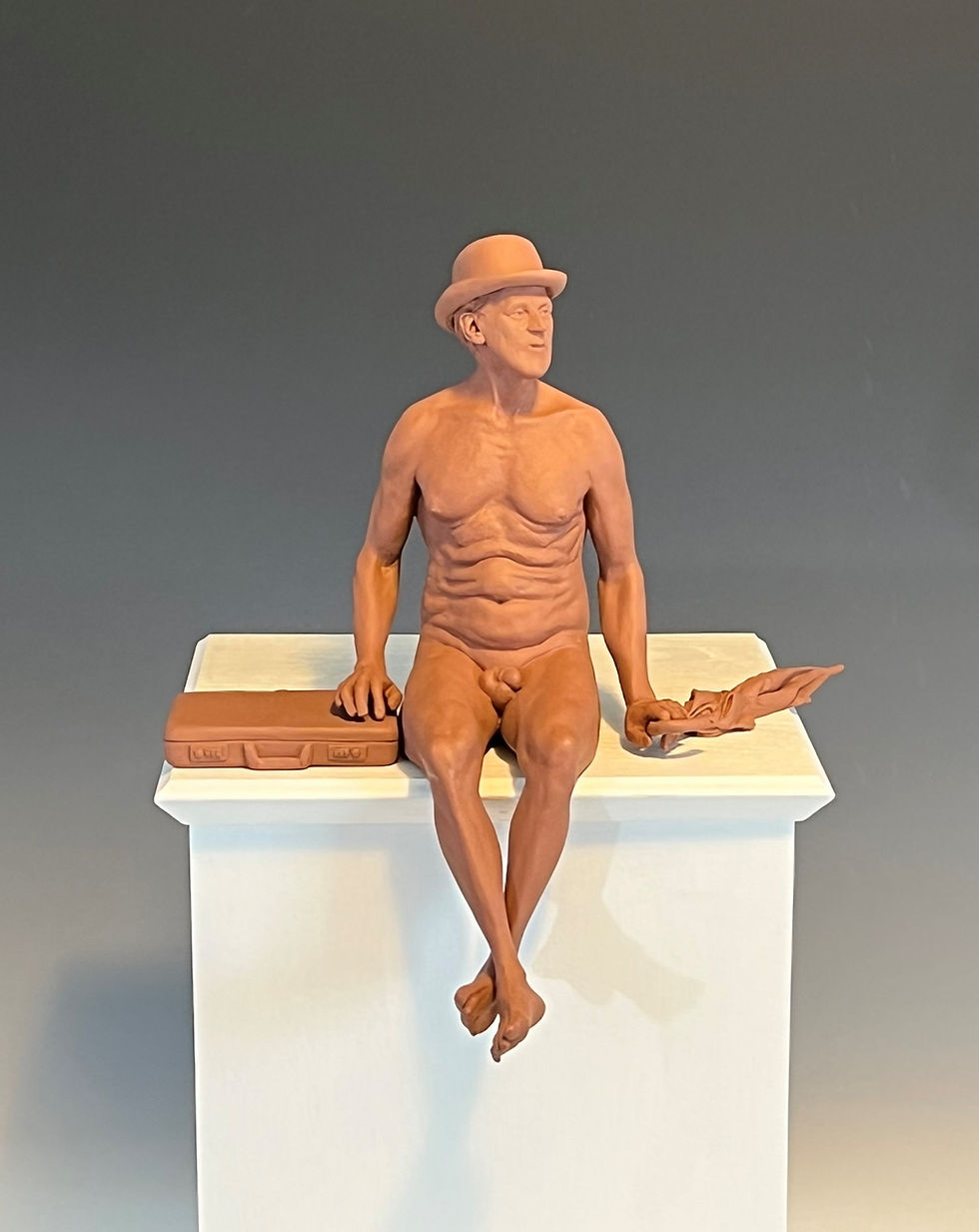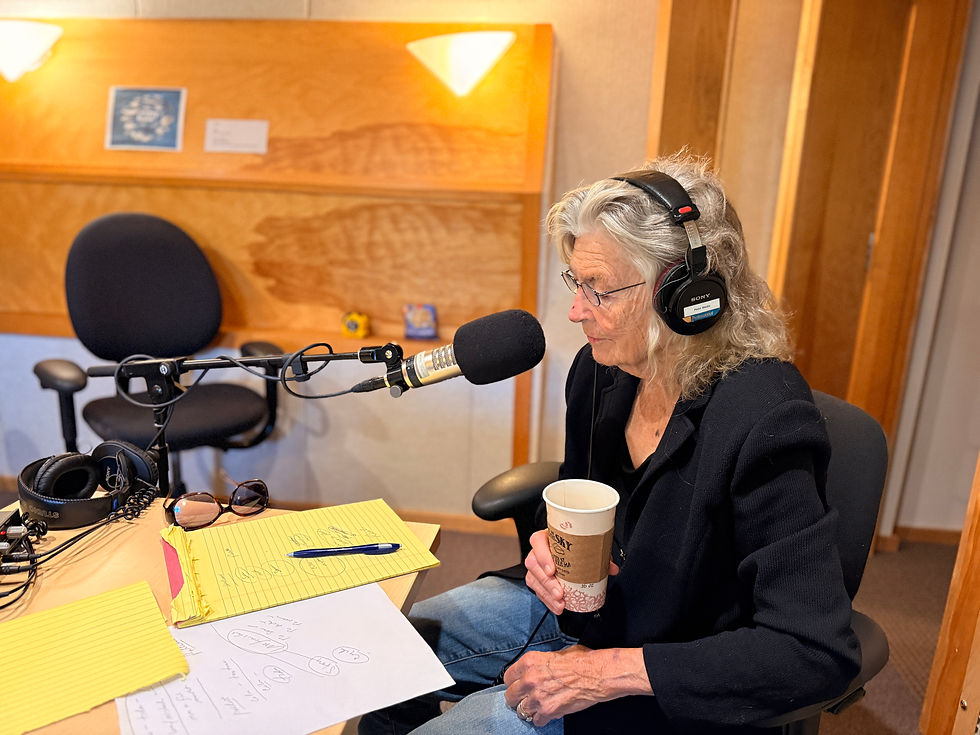BIRD HOUSE Artist in Residence Interview: Sculptor Neil Grant -Sculpting Humanity in Clay
- CCofCC
- Sep 1
- 5 min read

At the Cultural Center of Cape Cod, we celebrate artists who blend technical mastery with thoughtful storytelling—and few do that with more intention and skill than Neil Grant. A national award-winning figurative sculptor and dedicated educator, Neil creates expressive, often humorous works that explore the human condition through animal forms and finely observed gestures. Drawing on a background in marine biology, a lifelong fascination with anatomy, and a twenty-year corporate career he left to pursue art full-time, Neil brings a unique perspective to his craft. Based in Cape Cod, Massachusetts, he works primarily in clay, resin, and bronze, and has recently expanded into digital sculpting. He teaches sculpture workshops throughout the Cape and has been represented by Bowersock Gallery in Provincetown since 2018. Neil has studied under nationally recognized sculptors including Philippe Faraut and Brian Booth Craig.

Neil is currently the Artist in Residence at the Cultural Center of Cape Cod’s Hyannis Campus BIRD HOUSE at 46 Pearl Street, where his studio residency runs from September 2025 onward.
In this interview, Neil shares insight into his creative process, the relationship between realism and expression, and how teaching and living on Cape Cod continue to shape his evolving practice.
You sculpt a lot of animals—hares, owls, rhinos, frogs. What is it about those creatures that inspires you? How do you decide which one to make next?
I've loved animals since I was a kid (as a child, I was an avid badger-watcher in England), and I trained as a marine biologist, so it's perhaps inevitable that creatures have found their way into my art. I love the personalities of certain animals, and I have an unfortunate predilection for those that tend to misbehave—I'm drawn to a sly fox or a thieving magpie much more than to a cute kitten. I'm also a bit of an anatomy nerd and love understanding the physiology of animals, particularly by comparing it to humans.
My choice of which animal to sculpt next is driven partly by what interests me at the time and partly by circumstance. Right now, I'm working on a large, mischievous hare for the Children's Art Museum in downtown Hyannis—right next to my new studio!
While I love animals in their own right, for me, they’re also a way to say something about the human condition. For example, my latest piece, Under New Management—a sculpture of a Southern White Rhino with a collection of Oxpecker birds on its rump—is, on one level, just a sculpture of animals in the wild. But on another level, it’s about the significance of management to the worker in our modern economy. I think the best art allows the viewer to engage on a number of levels.

Can you tell me a bit about your process—like how you go from working with clay to painting the finished piece?
My process can vary in length enormously. My last piece came straight from a class demonstration that I decided to complete after the lessons had finished. But normally, there's a lengthy incubation period between having an idea and deciding it's worth pursuing. Typically, my ideas go into a small black Moleskine book, where they sit for six months or so before I review them again. I have many more ideas than I can complete in a lifetime, and upon review, I find that 97–98% of them aren’t very good ones. It’s the 2 or 3% that still appeal to me six months later that I pursue.
After I mentally “greenlight” an idea, it usually becomes a quick sketch in clay (known as a maquette) as I figure out the exact pose and what I’m trying to say. Once I’ve found the right pose, I create the piece in either water-based or oil-based clay. Some works are one-off ceramics, fired in the kiln and painted afterward. Others become limited editions in plaster, resin, or bronze, created through a process of mold-making and casting, either by me or a foundry.

Your work feels really lifelike, but still really expressive. How do you strike that balance between realism and your own artistic style?
I think it’s important to see the skill in a piece of art, so I try to be realistic in my representations—at least to the extent that it makes sense for engaging the viewer. But a life-like copy of a person or animal doesn’t say much unless the sculptor imbues it with some sort of emotion, either through gesture, facial expression, or both.
I’ve spent quite a bit of time studying the tiny muscle movements of the human face that convey emotion, particularly using the early work of psychologist Paul Ekman. I apply these principles to both humans and animals. I’m not afraid to use the facial coding for a human to make a hare look contemptuous. I’m pretty sure another hare wouldn’t interpret the expression that way, but I’m trying to speak to people through my work—so it’s important to use a visual language we recognize.

You also teach—what’s something you really hope your students take away from your classes? Has teaching changed the way you make your own art?
I hope that each of my students takes away a finished sculpture from my class! But more seriously, I want them to leave with a solid methodology for making their own art. My job is to teach technique so that students can express their own artistic personality in clay. Most people who come to a class have a desire to use clay to say something—to themselves, their family and friends, or to a wider audience. What they’re lacking are the skills to move the clay around in a way that communicates what they want to say.
My teaching style is very practical. You won’t hear me say, “Be the clay,” or “Feel the emotion,” but you will hear me say, “If you want to express surprise, move the upper eyelid above the iris to show the white of the eye.” My goal is to give students a strong foundation in sculpture that they can build their individuality on top of.
I love teaching, and although it’s a little clichéd, I really do learn as much from my students as they do from me. Some of them are accomplished artists in other media, like oil painting or photography, and they teach me ways of thinking about art beyond the discipline of sculpture. Other students watch a lot of YouTube or Instagram Reels and introduce me to new techniques or artists I haven’t encountered before. I take that energy back to my studio and weave it into my own work.

Has living and working on Cape Cod influenced your art at all? Do you think the local environment or community shows up in your work?
As an artist, I don’t think you can work in isolation from your environment or community, no matter where you are—and I think it’s smart to embrace that if you can. Your work is a product of you, and you are a product of your environment.
I love the Cape, but I’m not really a “sailboats and seashores” sort of artist. I’m far more interested in the creatures that come out at night—whether that’s in the woodlands of Marstons Mills or the streets of Provincetown.

Explore Neil's work at Granty-art.com and follow him on Instagram at @neil_grant_sculptor
Photographs courtesy artist as well as Bowersock Gallery




Comments